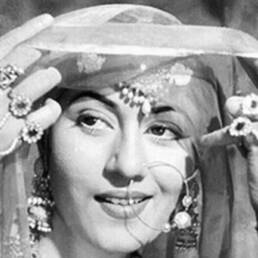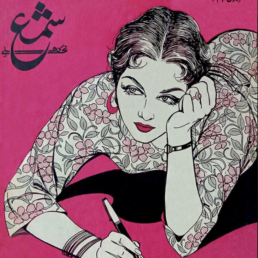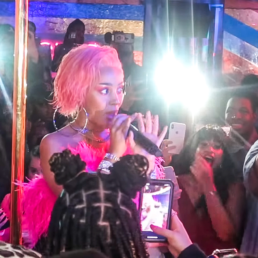While the Shahrukh Khan frenzy has gripped the whole country, we are hung up on a strange connection between the superstar and a group of people who helped shape the world of art for modern India. It included a man who had escaped Nazi-occupied Austria. Here’s the story.
It all begins with two houses, one called Villa Vienna, now a place of pilgrimage, standing on the Bandstand in Bandra; the other, almost next to it, known as Kekee Manzil, a place which holds a tapestry of art and a little bit of important history.
Once upon a time, both houses were owned by members of the same family. To get to the bottom of this story, we need to go to the latter part of the 19th century when the 16th Raja of Mandi, Bijai Sen, is supposed to have built a property for his wife on the Bandstand.
Back then Bombay, as it was called, was a mere shadow of what it is today. But even then, the Bandstand was a beauty to behold. The Raja’s property was supposedly named Villa Vienna.
After Bijai Sen’s death, the property was sold to a Parsi gentleman Maneckji Batliwala. This is where the story gets interesting. Batliwala was the maternal grandfather of Kaikhushru Minochair Gandhy, fondly known as Kekoo Gandhy.
So, who is Kekoo Gandhy and why should you know about him? Born into a Parsi family which had a tobacco business, Kekoo was first educated at the Cathedral and John Connon School in Bombay and later went to Cambridge University.

But the story is not just about Kekoo. In 1938, tensions were mounting in Europe, especially among the Jewish community as they were being ruthlessly persecuted by the Nazis.
It was then that Walter Langhammer, a fine painter from Austria, decided to flee to Bombay, owing to his anti-Nazi leanings and his wife being Jewish. In Bombay, thanks to his connections and profound knowledge of art, he was made the Art Director of the Times of India.
It was during this time, Langhammer and Kekoo Gandhy met at art circle socials and immediately bonded. Kekoo was impressed by Langhammer’s knowledge and enthusiasm about Indian art.
In the early 1940s, Kekoo, through his art circles, also met a fine gentleman from Belgium, Roger Van Damme. Roger’s father was a traditional frame maker. Roger’s idea that India would be a great market to sell frames, instantly hit Kekoo.
And so, in 1941, Kekoo and his brother Russy Gandhy decided to set up a company for manufacturing frames for paintings. It was named Chemical Moulding Manufacturing Company, which was later abbreviated to just Chemould.
But Kekoo didn’t just want to create a business for profiteering. He saw that Indian artists were lingering on the wayside with little or no space to sell their art and make a living. So, it became his lifelong struggle to provide that space to them.
He would roam around the country trying to search for the best young talents, making exhibition spaces, and lobbying at the various institutes to open up their doors and encourage more Indian artists.
He and Käthe Langhammer, Walter’s wife, would often use the salon of the Bombay Art Society to organize solo exhibitions for the young artists. Kekoo was also joint honorary secretary of the Society from 1948 to 1952.
He was instrumental in forming the Jehangir Art Gallery, the National Gallery of Modern Art in Bombay, and also the Lalit Kala Academy. He would also open his own home Kekee Manzil, for young budding artists which included the likes of M.F Hussain.
But providing the space for creativity wasn’t enough. He made sure that his framing company had the latest artwork from these artists, and he and Walter would often influence people from their social circles to buy these artwork.
The Parsi and the Jewish communities of Bombay, some of whom had fled like Walter, did a lot in this regard; Kekoo claimed Naval Tata, Ratan Tata’s father, was so generous, he had once bought 10-12 paintings. Some of those were done by Italian prisoners of war and some by Indian artists.
By the 1950s Kekoo’s framing business had become the largest in Asia, even exporting to Africa, the Middle East, and the Caribbeans. In 1963, Kekoo established the Gallery Chemould in a small space on the first floor of the Jehangir Art Gallery.
It was India’s first commercial art gallery. For as long as he lived, Kekoo did the things he loved, creating a space where so many young minds over the years have thrived and gone on to become something big.
A documentary was released in 2020 on Kekoo Gandhy’s exemplary life by his daughter, Behroze.
Seeing the property of Villa Vienna, Kekoo’s father bought the plot next to it and created a huge sprawling mansion and named it after Kekoo, Kekee Manzil. As a young boy, Kekoo would have had access to both houses standing next to each other.
His maternal grandfather, however, couldn’t keep Villa Vienna; it was passed down to his sister who ultimately sold it to a promoter. Years later, a ‘Jawaan’ Bollywood actor named Shahrukh Khan would buy the property and transform it into what is now known as Mannat.
Sources:
Facebook page – The Princely Indian, https://m.facebook.com/TheroyalIndia; The beginnings of the art movement by Kekoo Gandhy, https://www.india-seminar.com/2003/528/528%20kekoo%20gandhy.htm; KEKOO MINOCHAIR GANDHY, https://archive.metromod.net/viewer.p/69/2951/object/5138-7555936; The house of art – The story of a gallery and an art revolution by Ruchir Joshi https://www.telegraphindia.com/opinion/kekee-manzil-the-house-of-art/cid/1786254




